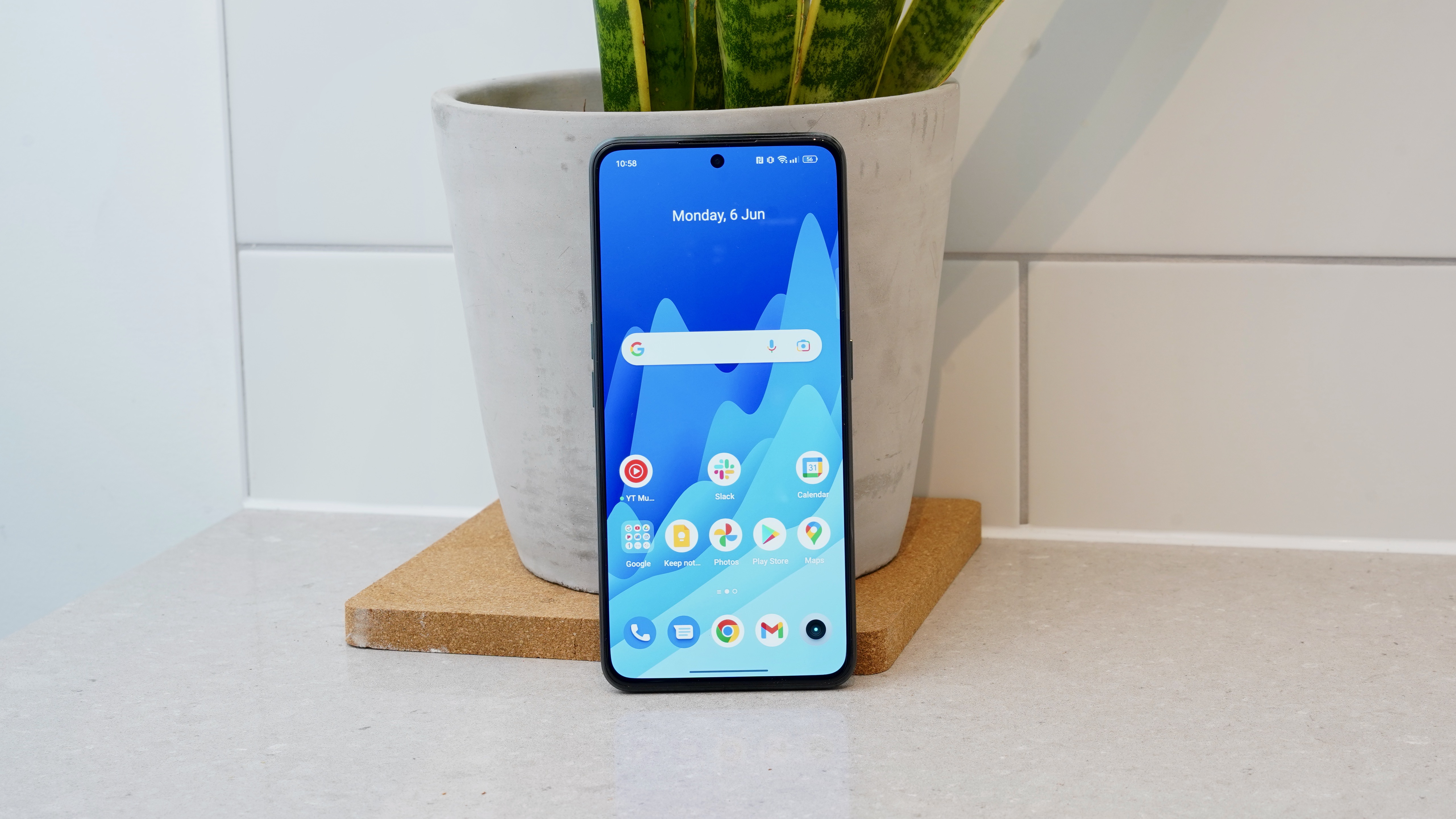TechRadar Verdict
The Realme GT Neo 3 might not be quite the upper-mid-range stunner or the outright head-turner that the Pixel 6 is, but rapid charging, a strong main camera, and punchy performance make it a fine alternative.
Pros
- +
Fine main camera
- +
Flagship-level performance
- +
Rapid 150W charging
Cons
- -
No telephoto lens and mediocre ultra-wide
- -
Small battery
- -
Some bloatware
Why you can trust TechRadar
Two-minute review
As with previous GT phones from the brand, the Realme GT Neo 3 offers several flagship-challenging specifications in a reasonably priced mid-range package.
The headline feature, in this variant at least, is a 150W wired charger that can get your battery up to 100% in 15 minutes. The implementation isn’t massively reassuring (why do we need to toggle it on?), and it’s a shame the battery has been somewhat downscaled by way of a trade-off, but this is impressive stuff for a phone of this price.
Also reasonably impressive is the Realme GT Neo 3’s 50MP main camera, which showcases a flagship-level Sony IMX766 sensor. It would have been more noteworthy had we not already seen this component in even cheaper phones like the Realme 9 Pro Plus and the OnePlus Nord 2T, but it’s capable of taking decent pictures in a variety of lighting conditions nonetheless.
We’re much less impressed with the phone’s two supplementary cameras, which provide sub-par ultra-wide shots and forgettable macro snaps. There’s no telephoto either, though that’s far from a given at this price.
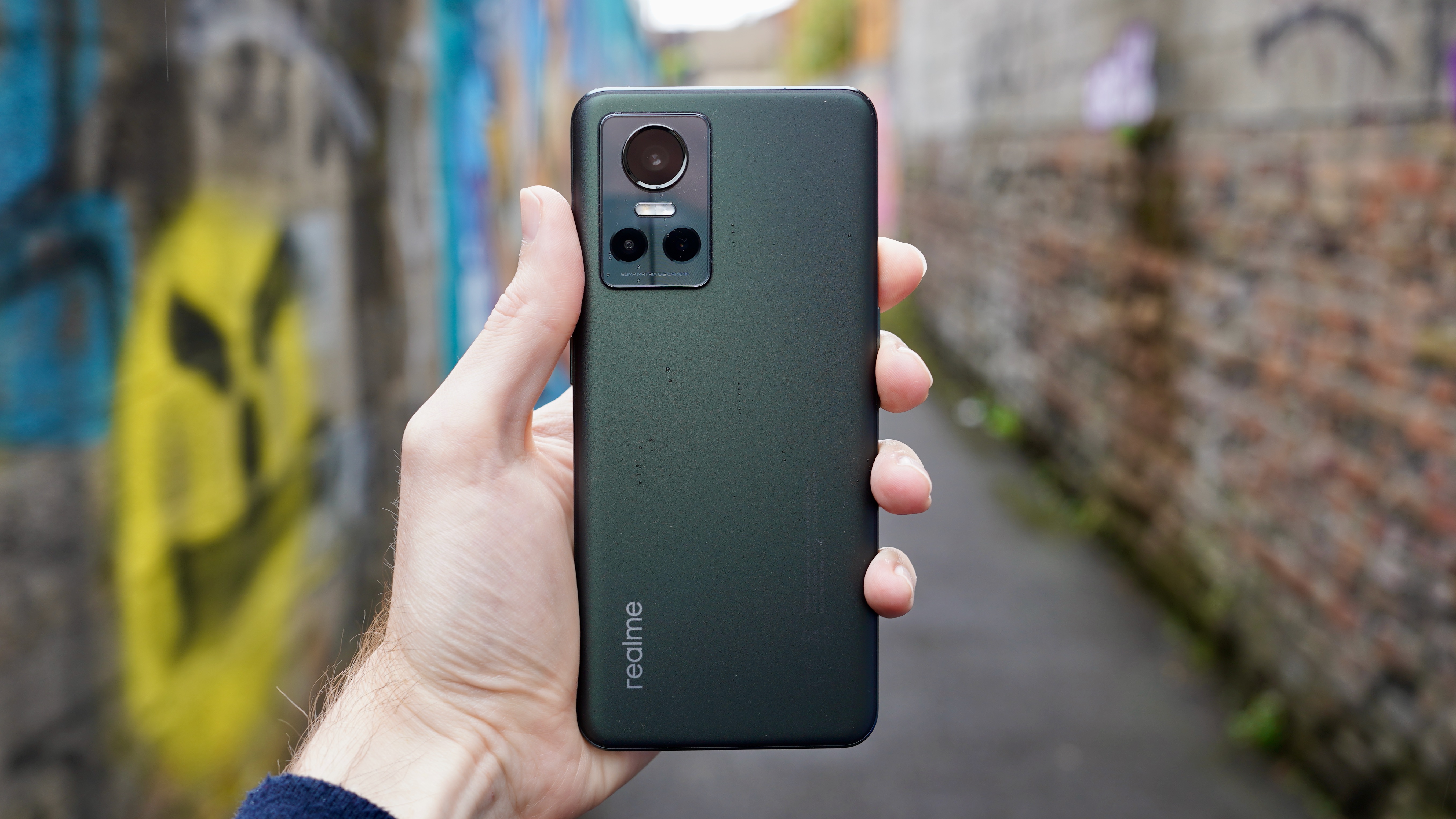
Performance here is unimpeachable. While it’s true that the Realme GT Neo 3 misses out on a recognized flagship processor, the Dimensity 8100 chip it runs on is impressive in all the ways that count.
At this price, the Realme GT Neo 3 faces stiff competition from Google’s Pixel 6, which tops it for its stand-out design, clean software, wireless charging provision, and class-leading camera. But the Realme GT Neo 3 competes well while providing a few telling benefits of its own.
It doesn’t dazzle in the way that the Realme 9 Pro Plus did a few months prior, either with its design or its value proposition, but the Realme GT Neo 3 is a fine upper-mid-range choice nonetheless.
Realme GT Neo 3 price and availability
- Will cost around £599 (about $750 / AU$1,040)
- Confirmed to be coming to the UK
The Realme GT Neo 3 will cost £599 (about $750 / AU$1,040) for the sole 12GB/256GB version that’s set to launch in the UK.
At this UK pricing, the Realme GT Neo 3 is running head-on into the Pixel 6 and the Samsung Galaxy S21 FE (at least with its contemporary pricing), whilst comfortably undercutting the iPhone 13 and the Samsung Galaxy S22.
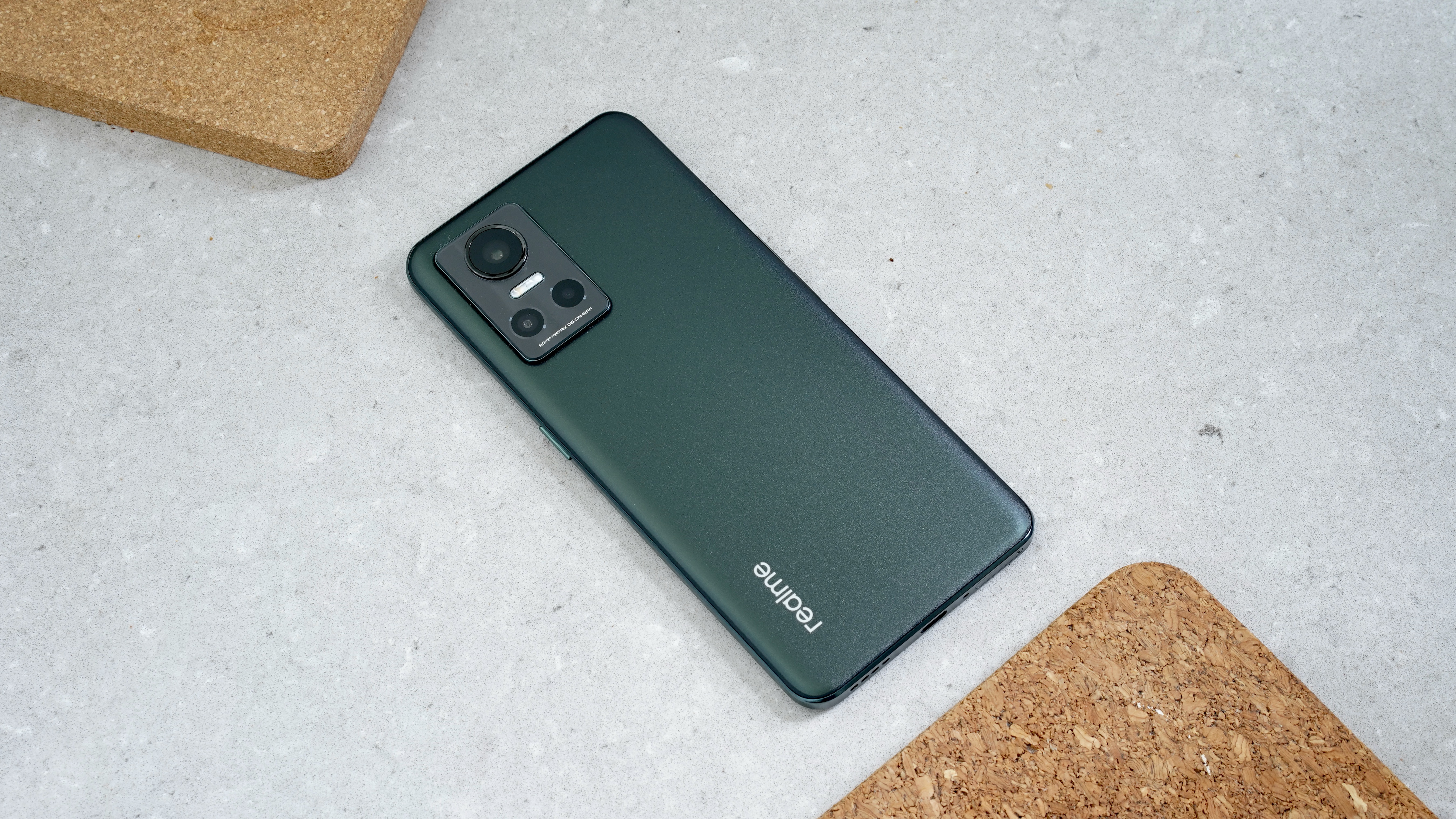
Realme GT Neo 3 design
- High screen-to-body ratio
- Similar design to the GT Neo 2
Holding the phone alongside its predecessor the Realme GT Neo 2, the GT Neo 3 looks and feels very familiar. It has very similar proportions at 163.3 x 75.6 x 8.2mm, though it shaves off 12g to weigh a more reasonable 188g.
The main difference relates to the rear panel, which has a slightly textured finish rather than its dead-smooth forebear. It’s still slightly slippery, but this represents a handling improvement. The new texture also makes the GT Neo 3 more resistant to fingerprints.
Our model comes in Asphalt Black, but we detected a slight green shimmer from certain angles. The model that’s getting most of the attention is the Nitro Blue version, which comes with two go-faster stripes and Realme’s ‘Dare to Leap’ slogan emblazoned on the back. Your mileage may vary over which is preferable.
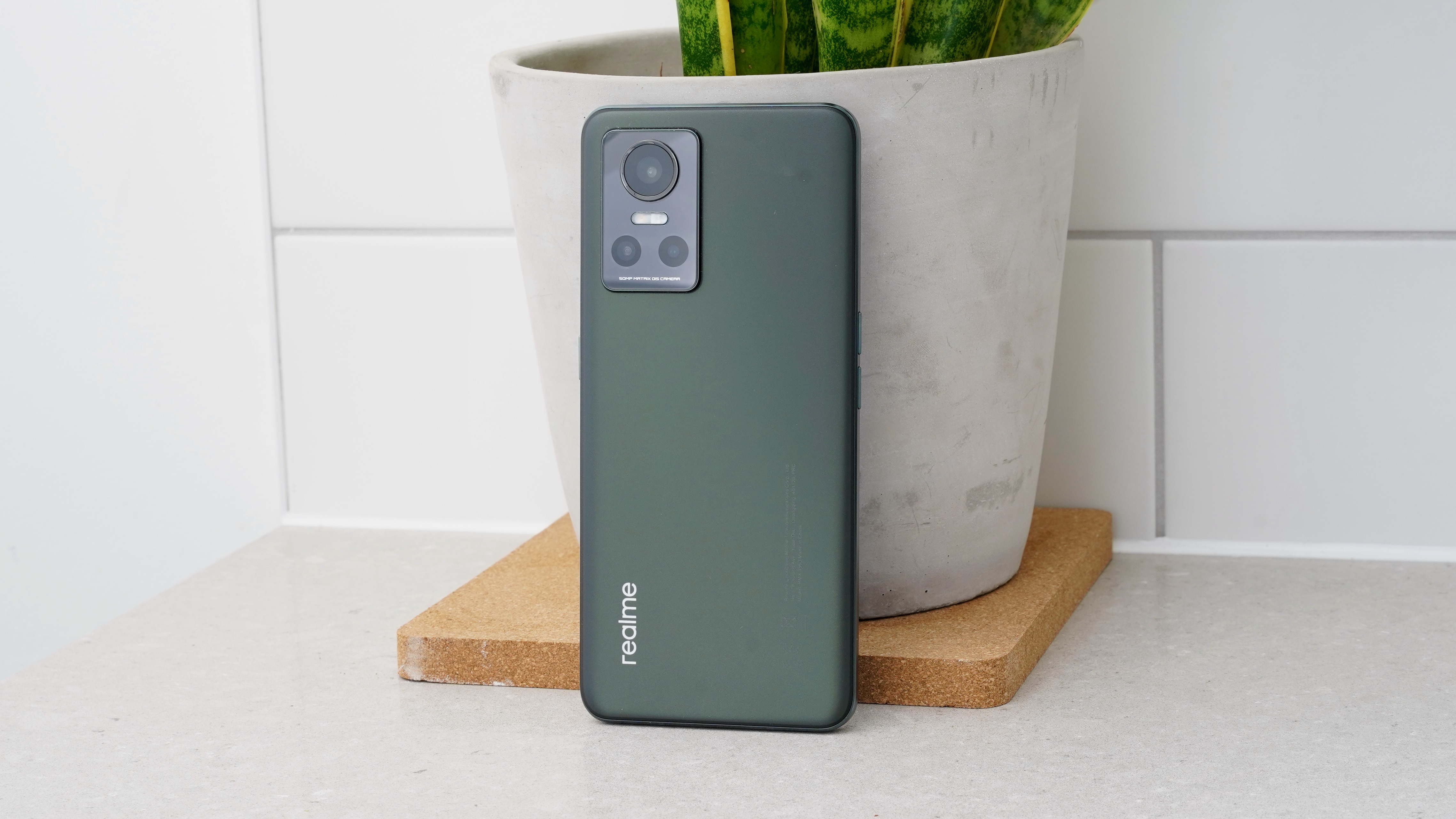
Another difference is a slightly reconfigured camera module with more prominence given to the new super-sized wide sensor. Around the front it’s much the same, but with the hole-punch notch shifting from the left corner to the center.
There’s a very impressive 94.2% screen-to-body ratio, which reflects the fact that the bezels are uniformly minimal. Less premium is the phone’s plastic frame, though it doesn’t feel especially cheap to hold.
That display is fronted by Corning Gorilla Glass 5, which should make it suitably scratch resistant.
Another welcome touch is the provision of stereo speakers, though we’re seeing such a provision making an appearance in an increasing number of mid-range and even budget phones now. They’re loud and clear, if a little reedy compared to more expensive phones.
Realme GT Neo 3 display
- 6.7-inch 1080 x 2412 screen
- 120Hz refresh rate
Realme has supplied a large, good quality 6.7-inch AMOLED display for the GT Neo 3. It packs a 1080 x 2412 or FHD+ resolution, and benefits from a full 120Hz refresh rate.
This isn’t the kind of LTPO panel that you get with flagship phones, which means this refresh rate isn’t totally flexible. That’s not great news for the screen’s efficiency, but it doesn’t make a difference when it comes to sheer responsiveness, which is on point.
The GT 3’s screen upper brightness setting is fine, though it falls short of out-and-out flagship phones when in strong outdoor lighting. In all other conditions, it proves more than adequate.
There’s a responsive in-display optical fingerprint sensor towards the bottom of the device. Like the Realme 9 Pro Plus before it, this can be used as a heart rate monitor if you dive into the Realme Labs section of the Settings menu.
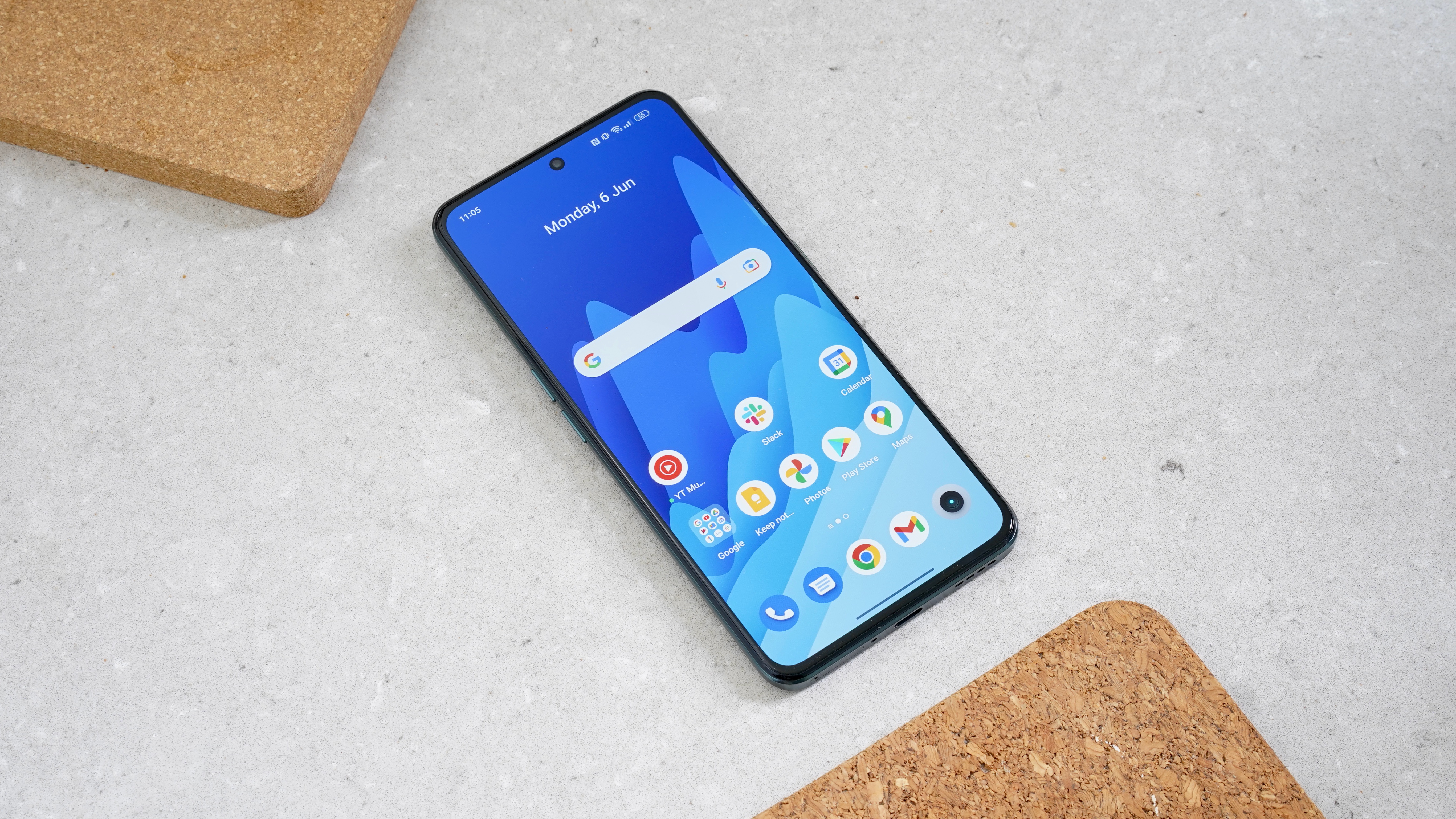
Realme GT Neo 3 camera
- Decent 50MP main sensor
- No telephoto lens
While the headline addition to the Realme GT Neo 3 might be that 150W charger, its camera upgrade might prove to be the more meaningful addition.
The phone’s 50MP wide camera is backed by a Sony IMX766 sensor. It’s not the freshest or most impressive image sensor on the market any longer, but it’s still a flagship (or at least flagship-adjacent) component. This main camera yields suitably crisp, vibrant shots in most lighting conditions, elevating it above much of the mid-range crowd.
That said, if this isn’t exactly the same camera system that can be found in the significantly cheaper Realme 9 Pro Plus, as well as the OnePlus Nord 2T, then it’s at least very similar indeed. The same Sony IMX766 sensor lies at the heart of all three phones.
We have no issue with the shared main sensor, but we’d expect some improvements from that 8MP ultra-wide camera, which represents a noticeable step down in detail, dynamic range, and color balance. The difference in quality is not a flattering look.
Meanwhile, the shared lack of a dedicated telephoto is slightly harder to swallow in a £600 phone than it is in a £400 phone. No, the Pixel 6 doesn’t have one either, but we complained about it in that review too, and Google’s phone takes even more impressive pictures elsewhere to make up for the omission.
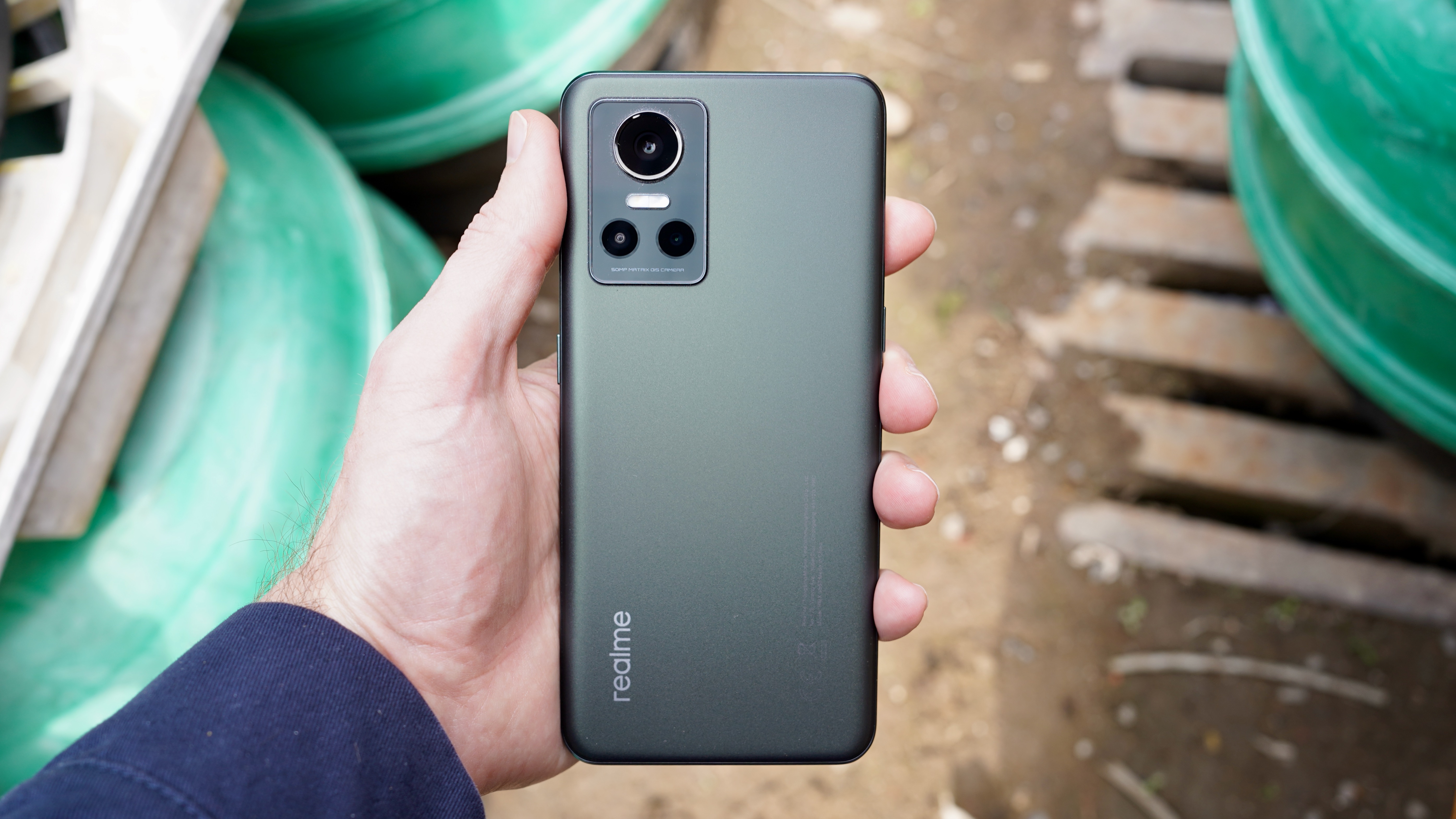
Google didn’t bother including a pointless 2MP macro sensor on its own mid-range phone either. We understand the box-ticking merits of bundling it into a cheaper phone, but at this end of the market its inclusion feels faintly insulting.
Realme has included an optional AI camera mode, which is off by default. In general shooting, this serves to brighten and punch up the colors, which helped even out some challenging HDR situations (such as when shooting up at a tower against a bright but cloudy sky) and murkier food shots. In general landscape shooting, however, the AI could make scenes look a little artificially colorful, and we preferred to leave it off.
Night shots are decent quality, courtesy of that large 1/1.56" main sensor and OIS. Realme’s Night mode does well to brighten scenes out without making them look too false.
The 16MP front camera takes adequate selfies, provided there aren’t any extremely bright areas to blow things out, though there’s a certain softness and a lack of depth to its snaps.
Camera samples









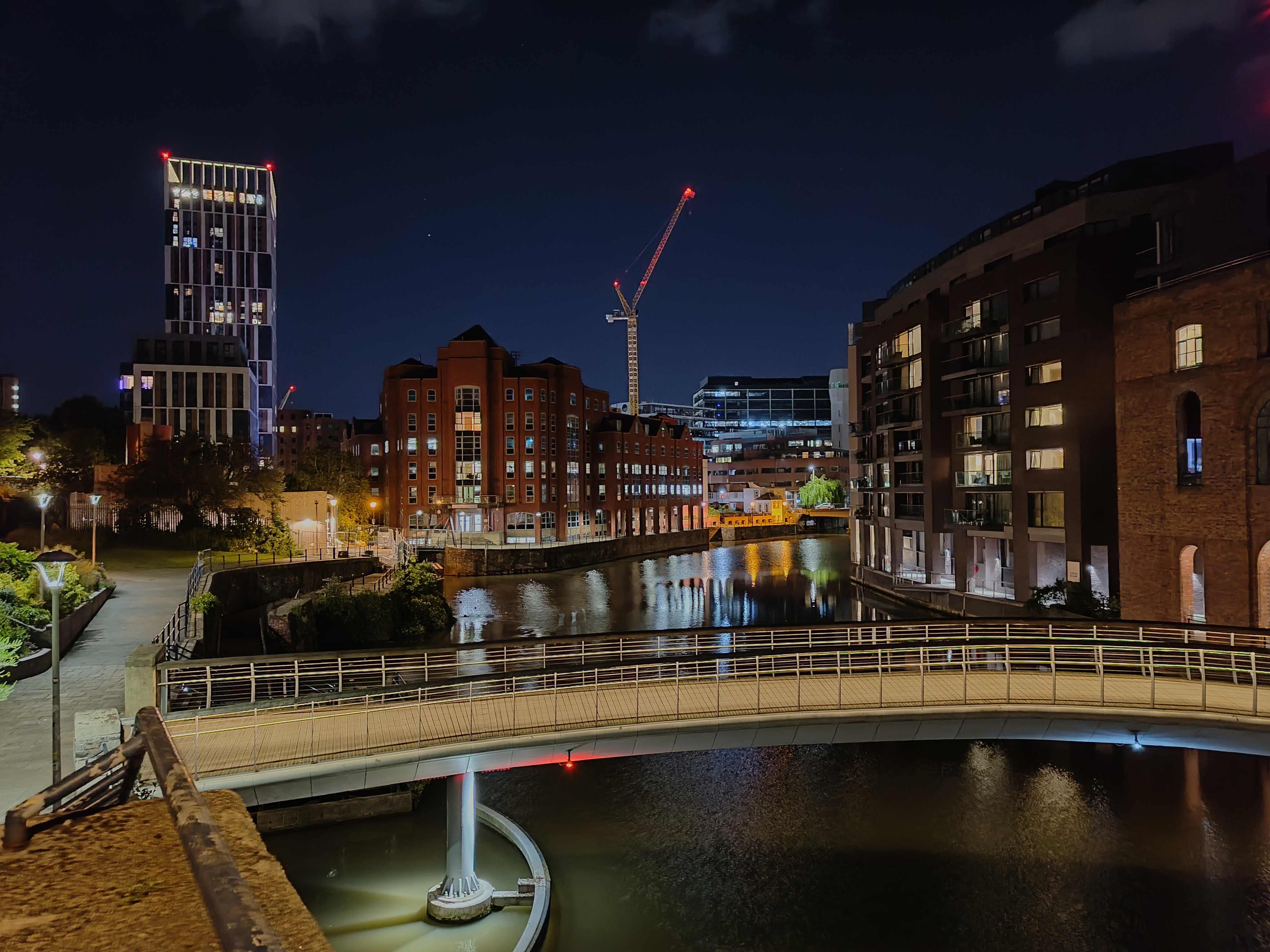



Realme GT Neo 3 specs and performance
- MediaTek Dimensity 8100 chipset
- 12GB of RAM
Realme has equipped its upper-mid-ranger with a brand new MediaTek Dimensity 8100 chip. Built using a thoroughly modern 5nm process, it’s firmly towards the top end of the mid-range processor tier, and even troubles a few flagship rivals.
This is evident from average Geekbench 5 scores of 966 single-core and 4061 multi-core. That latter score in particular handily beats flagship phones powered by the Exynos 2200 and Snapdragon 8 Gen 1 by 400 to 600 points.
With 12GB of RAM as standard, together with 256GB of internal storage, this is essentially flagship spec.

In practical terms, we were able to run Genshin Impact on High settings and 60fps with highly playable results. Again, that’s flagship territory.
For day-to-day running, the Realme GT Neo 3 doesn’t miss a beat. Everything flies by in full 120Hz, with no discernible stutters. Its performance really is indistinguishable from phones selling for twice the money.
Realme GT Neo 3 software
- Runs Android 12
- Realme UI 3.0 comes with a number of preinstalled apps
The Realme GT Neo 3 runs on Android 12 with Realme’s own custom Realme UI 3.0 on top. It’s the exact same interface we ran through in the Realme 9 Pro Plus, so it comes with the same warnings about bloatware.
You get the same preinstalled offering of Amazon Shopping, Booking.com, TikTok, Facebook, and LinkedIn. It would have been nice to have these presented as a choice during the installation process, but it’s far from the most egregious examples of front-loading such apps that we’ve seen.
The Android 12 side of things provides a limited Wallpaper theming element, but it’s not exactly Material You as experienced on the Pixel 6. For all its customization options, Realme UI 3.0 can feel almost old-fashioned compared to stock Android and iOS.
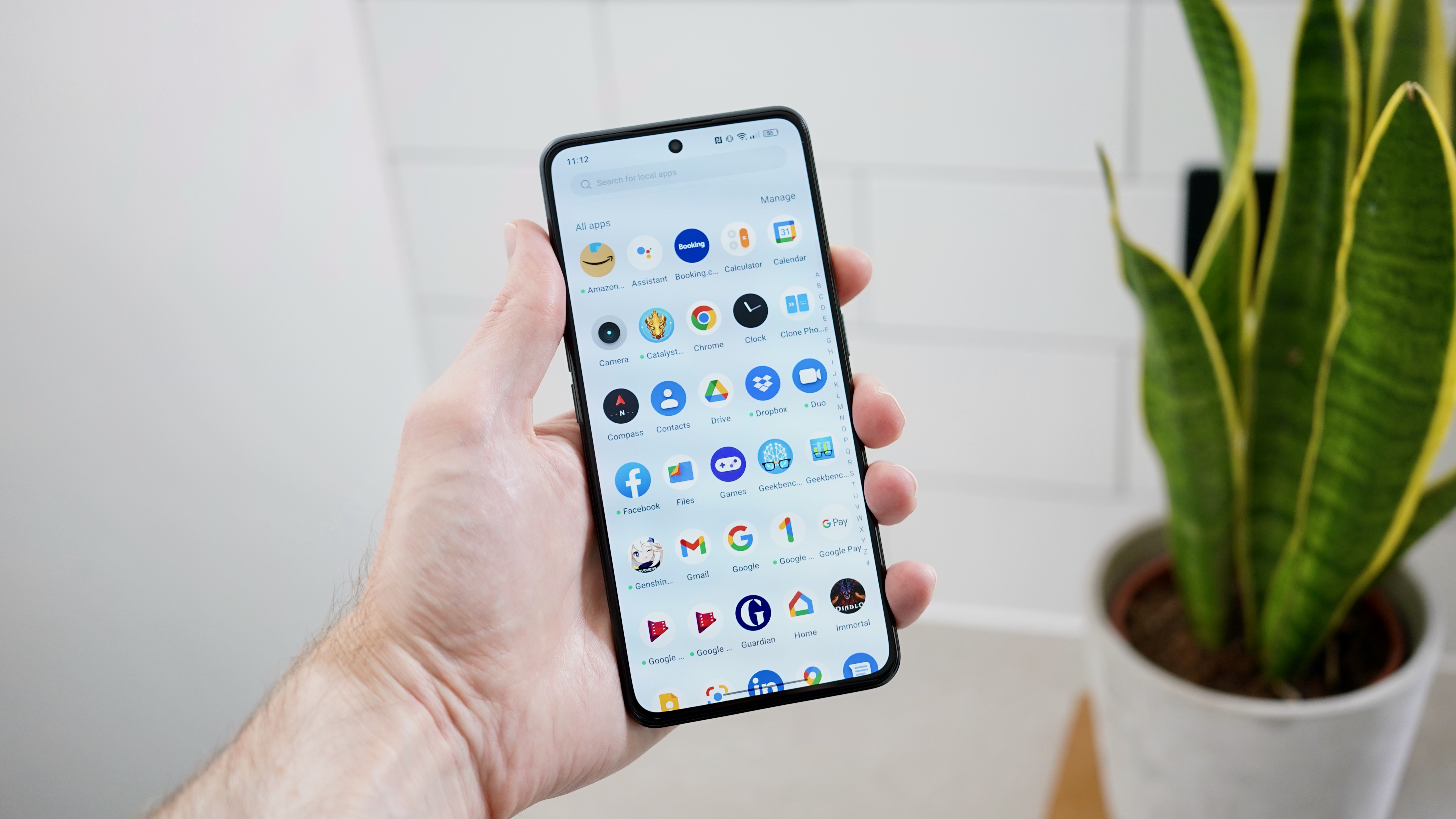
In general, though, there’s little to complain about with Realme UI 3.0 on the Realme GT Neo 3. It’s relatively clean, it runs well at the full 120Hz refresh rate, and it leaves the Google Feed and app tray provisions exactly where they should be.
Realme GT Neo 3 battery life
- 4,500mAh battery offers reasonable stamina
- 150W charger juices it up in just 15 minutes
So far so consistently competent, but Realme has made a rare hardware error with the Realme GT Neo 3’s battery. In this variant of the phone, you only get a 4,500mAh cell.
To be clear, other territories get a version with a significantly larger 5000mAh cell. There’s a payoff for this, which we’ll get to in due order, suffice to say that we’re not sure it’s one that’s worth making.
While the Realme GT Neo 3’s stamina is far from bad, it also fails to impress. On an average 16-hour day with a little over 3 hours of screen-on time – what we’d call moderate usage - we found that the Neo 3 would drop to around 35 - 40%.
That’s far from a reason to call panic stations, but it’s not unusual for a well-optimized Android phone with a 5000mAh battery to hit 50% and beyond under similar circumstances.
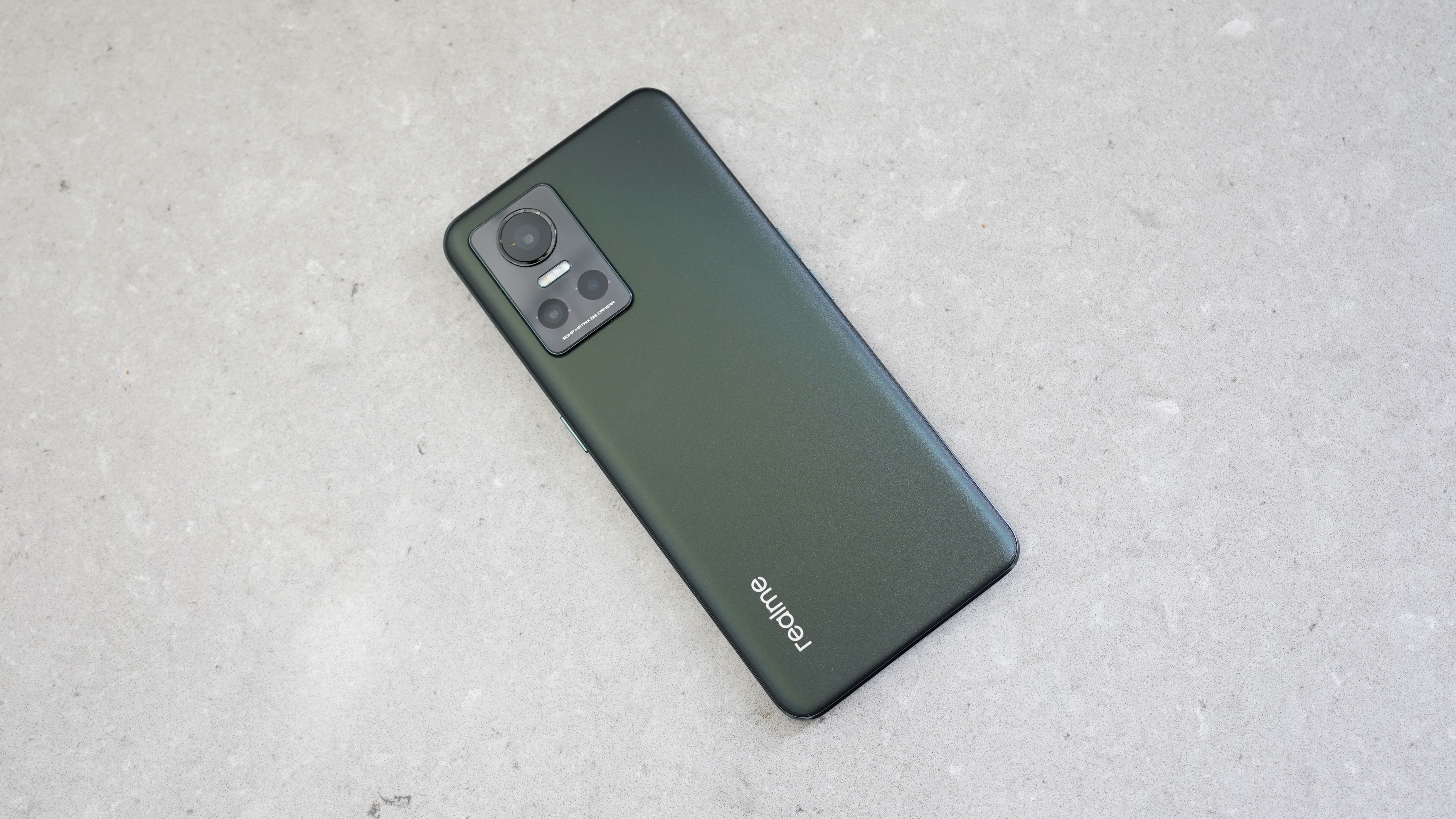
That trade-off we mentioned comes from the provision of rapid 150W charging in the western model. Other territories get 80W charging.
You’ll have to activate rapid charging manually in the Settings menu, which tells you that it’s perhaps not the best solution for those concerned about battery longevity or heat build-up.
Once active, we were able to charge the phone up to 100% in just 15 minutes, which is undeniably impressive. But then, the 80W model gets you to full in just over 30 minutes, which is hardly slow. We would have preferred the extra stamina, to be frank.
Another thing you miss out on here is wireless charging. While this isn’t exactly a normal feature at such less-than-flagship pricing, Google’s Pixel 6 does give you wireless charging for the same money.
Should you buy the Realme GT Neo 3?
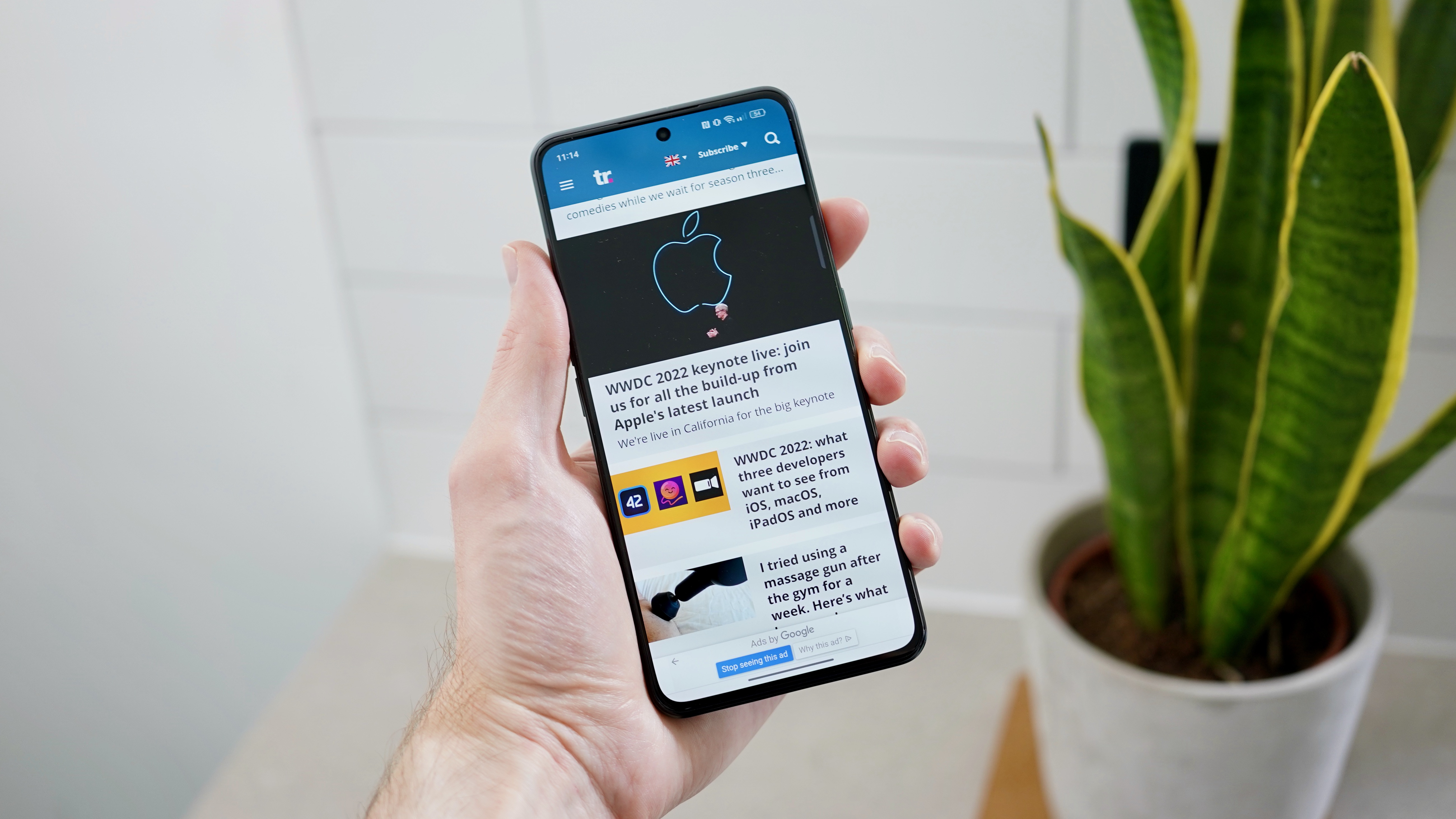
Buy it if...
Charging speed is top of your priority list
No mid-range phone and few flagship phones charge as fast as the Realme GT Neo 3, with a bundled 150W charger getting you up to full within 15 minutes.
You want a strong main camera for less
The Realme GT Neo 3 isn’t the cheapest phone with a decent main camera, and it’s outgunned by the Pixel 6 in its price category, but the main 50MP sensor is still capable of strong results.
You want a strong mid-range performer
The Realme GT Neo 3’s Dimensity 8100 chip is capable of mixing it with out-and-out flagships, which should be music to the ears of gamers on a budget.
Don't buy it if...
You want bloat-free software
Realme UI 3.0 isn’t bad, but it does bundle in a bunch of apps you might not necessarily want preinstalled on your phone.
Stamina is a priority
The Realme GT Neo 3 might charge fast, but its 4500mAh battery isn’t as capacious as it could be.
You like to zoom in or pan out
There’s no telephoto lens here, and the 8MP ultra-wide isn’t of a particularly high quality.
First reviewed: June 2022
